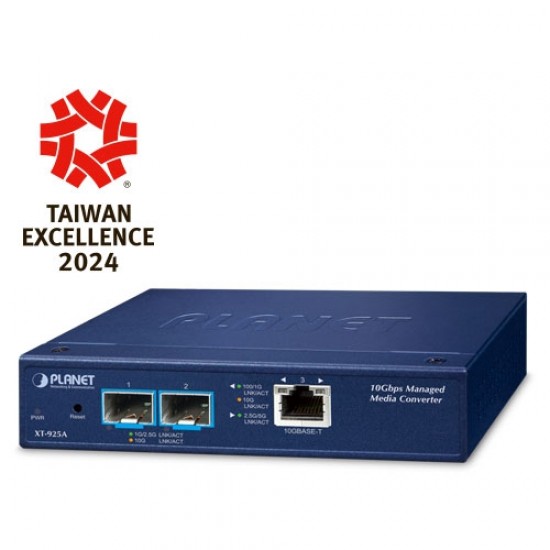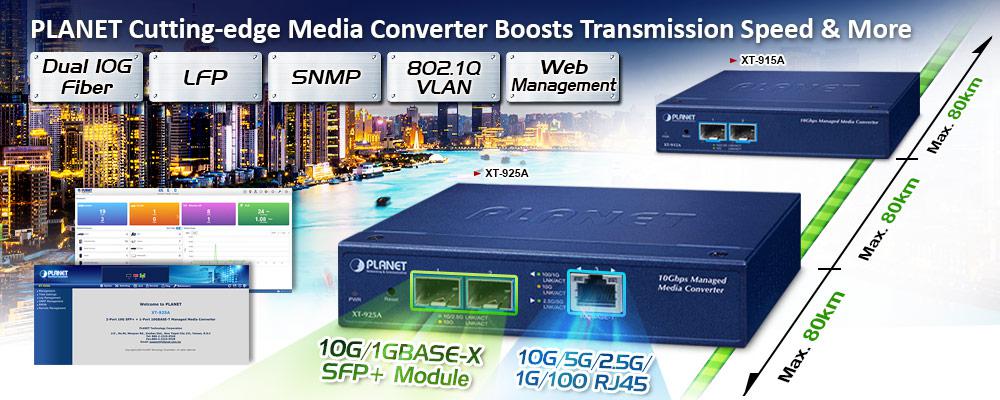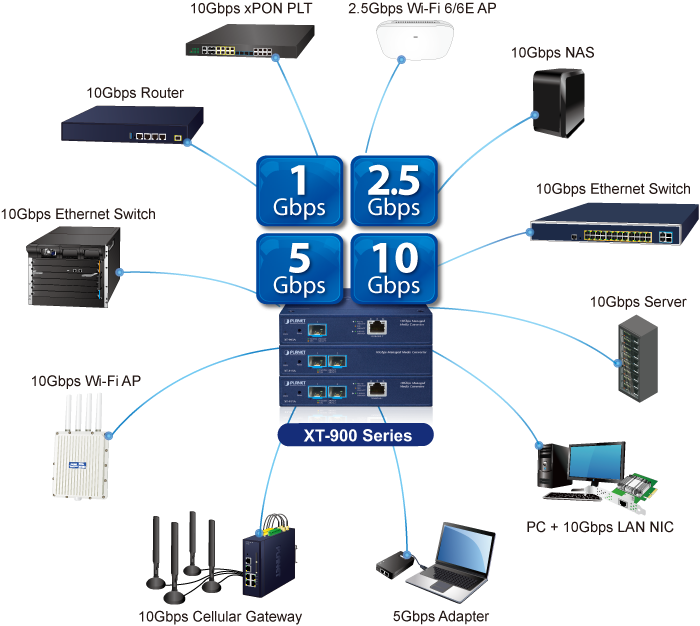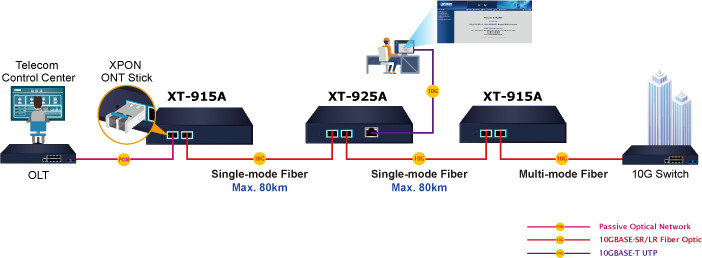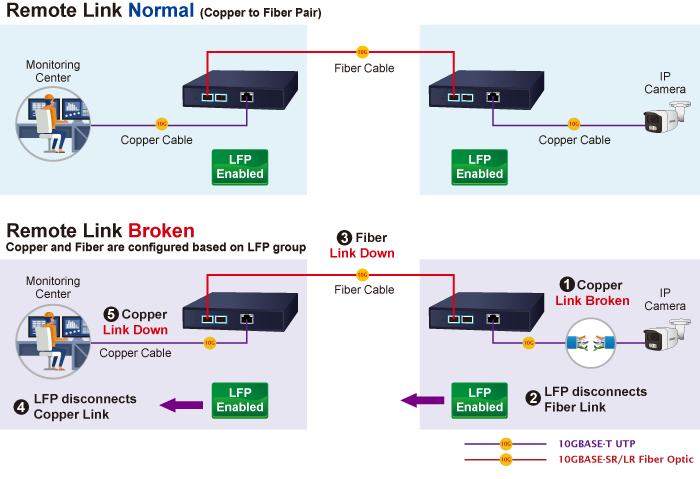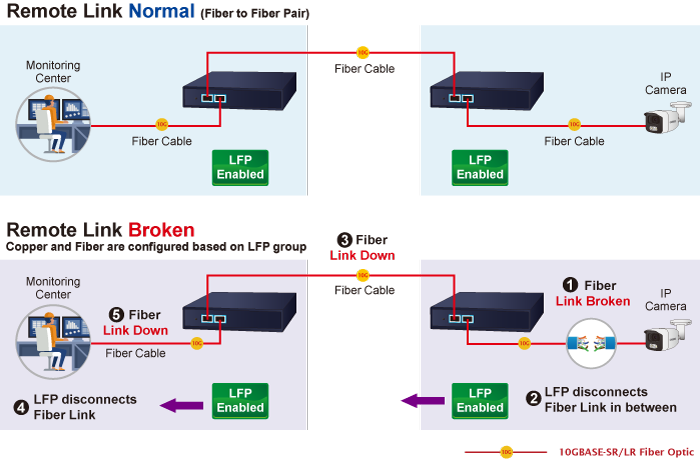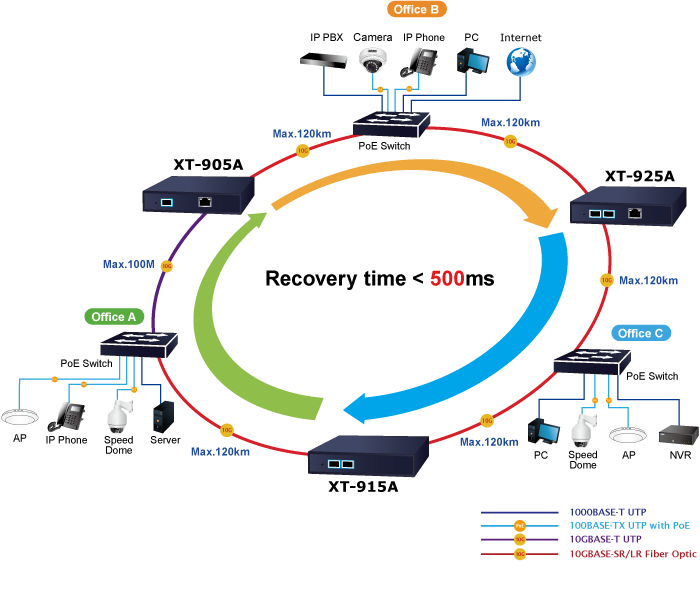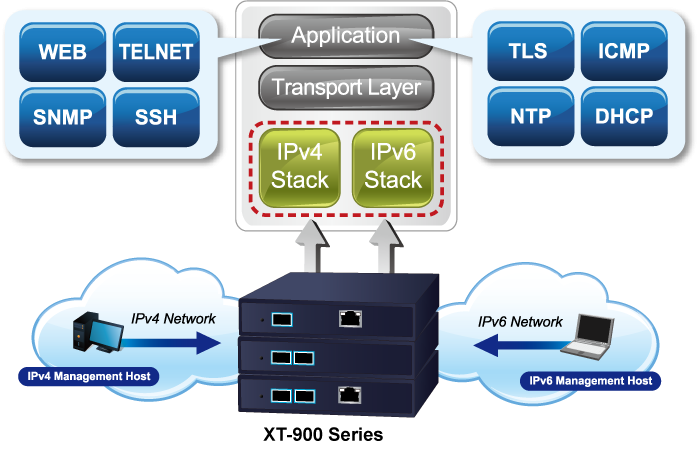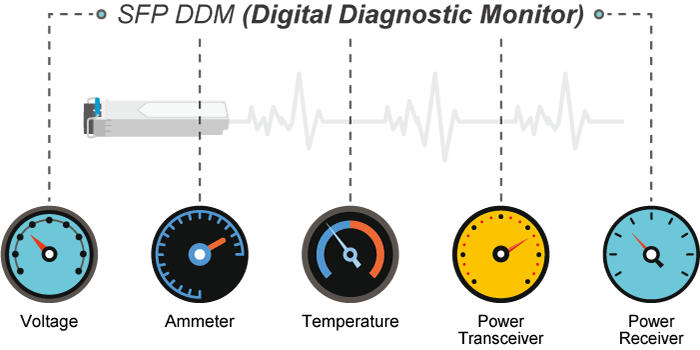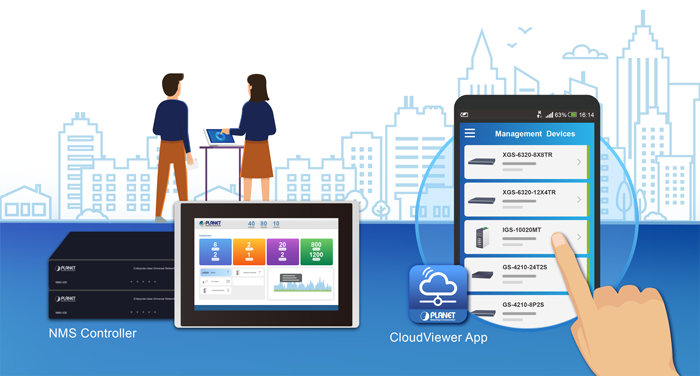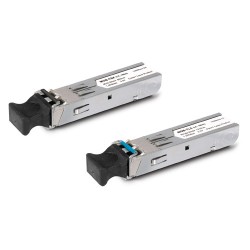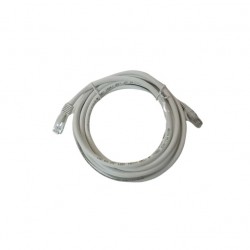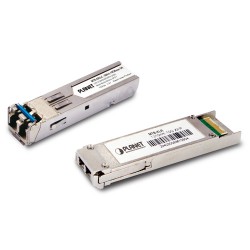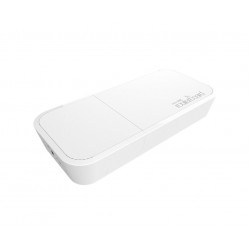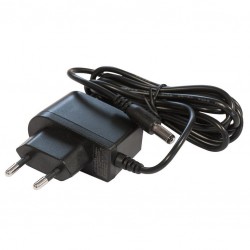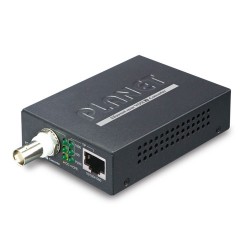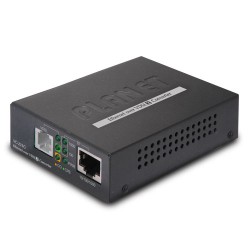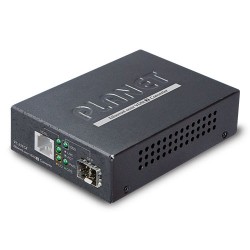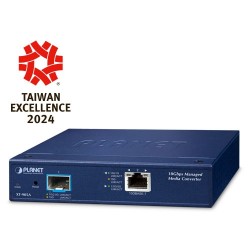PLANET 1-Port 10G/5G/2.5G/1G/100BASE-T + 2-Port 10G/1GBASE-X SFP+ Managed Media Converter
- ΔΙΑΘΕΣΙΜΟΤΗΤΑ: 15-20 Ημέρες
- Κωδικός Προϊόντος: XT-925A
- EAN: 4711605287326
| Hardware Specifications | |
| Copper Interface | 1x 10G/5G/2.5G/1G/100BASE-T RJ45 interface with auto MDI/MDI-X function |
| Fiber Interface | 2x 10G/2.5G/1G/100BASE-X SFP+ interface |
| Reset Button | < 5 sec.: System reboot > 5 sec.: Factory default |
| ESD Protection | 4KVDC Contact / 8KVDC Air |
| Enclosure | Compact-sized metal case |
| Installation | Wall-mount and DIN-rail kit installation (optional) |
| Dimensions (W x D x H) | 135 x 87.8 x 32mm |
| Weight | 437g (device only) |
| Power Requirement | DC 12V, 1.5A, external power adapter |
| Power Consumption (XT-925A) | 3.24 watt/11.06 BTU/hr (No Loading) / 12.5 watt/42.65 BTU/hr (Full Loading) |
| LED Indicator | System: PWR, (Green) Per 10GBASE-T RJ45 Port: 1G/100 LINK/ACT (Green) 2.5G/5G LINK/ACT (Green) 10G LINK/ACT (Amber) Per 10GBASE-X SFP+ Port: 1G LINK/ACT (Green) 2.5G LINK/ACT (Green) 10G LINK/ACT (Amber) |
| Transmission Specifications | |
| Processing Scheme | Store and Forward |
| Fabric | 60Gbps |
| Throughput (packet per second) | 29.76Mpps@64bytes |
| Address Table | 16K entries, automatic source address learning and aging |
| Flow Control | Back pressure for half duplex IEEE 802.3x pause frame for full duplex |
| Jumbo Frame | 12K |
| Shared Buffer | 12Mbits |
| Layer 2 Function | |
| Port Configuration | Port disable/enable Auto-negotiation 100Mbps, 1/2.5/5/10Gbps full and half duplex mode selection Flow control disable/enable |
| Port Status | Display each port’s link status, speed, Auto-negotiation status, duplex mode, flow control status |
| VLAN | IEEE 802.1Q tag-based VLAN IEEE 802.1ad Q-in-Q tunneling Up to 256 VLAN groups, out of 4096 VLAN IDs |
| Bandwidth Control | Per port bandwidth control Ingress: 16~10,000,000Kbps Egress: 16~10,000,000Kbps |
| QoS | Traffic classification based, strict priority and WRR 8-level priority for switching Traffic classification: Cos/802.1p DSCP IP Precedence |
| Ring | Supports ERPS, and complies with ITU-T G.8032 Recovery time < 450ms |
| Security Function | |
| Access Security | Remote management protocols support: SSH, Telnet, HTTP and HTTPs Protected ports |
| System Management | |
| Basic Management Interfaces | Telnet, Web browser, SNMP v1, v2c |
| Secure Management Interfaces | SSHv2, TLSv1.2, SNMPv3 |
| System Management | Firmware upgrade by HTTP protocol through Ethernet network Configuration upload/download through HTTP LLDP protocol SNTP PLANET Smart Discovery Utility PLANET NMS Controller PLANET CloudViewer mobile app |
| Event Management | Remote syslog Local system log SNMP trap |
| SNMP MIBs | RFC 1213 MIB-II RFC 2863 IF-MIB RFC 1493 Bridge MIB RFC 1643 Ethernet MIB RFC 2863 Interface MIB RFC 2665 Ether-Like MIB RFC 2737 Entity MIB RFC 2819 RMON MIB (Groups 1, 2, 3 and 9) RFC 3411 SNMP-Frameworks-MIB LLDP MAU-MIB |
| Standards Conformance | |
| Regulatory Compliance | FCC Part 15 Class A, CE Class A |
| Stability Testing | IEC60068-2-32 (free fall) IEC60068-2-27 (shock) IEC60068-2-6 (vibration) |
| Standards Compliance | IEEE 802.3u, 100BASE-TX/FX IEEE 802.3ab, 1000BASE-T IEEE 802.3bz, 2.5G/5GBASE-T IEEE 802.3an, 10GBASE-T IEEE 802.3z, 1000BASE-SX/LX IEEE 802.3ae 10GBASE-SR/LR IEEE 802.3x full-duplex flow control IEEE 802.1p Class of Service IEEE 802.1Q VLAN tagging IEEE 802.1ad Q-in-Q VLAN stacking IEEE 802.1ab LLDP RFC 768 UDP RFC 2474 DSCP RFC 791 IP RFC 792 ICMP RFC 2068 HTTP ITU-T G.8032 ERPS Ring |
| Environment | |
| Operating | Temperature: 0 ~ 50 degrees C Relative Humidity: 5 ~ 95% (non-condensing) |
| Storage | Temperature: -10 ~ 70 degrees C Relative Humidity: 5 ~ 95% (non-condensing) |

